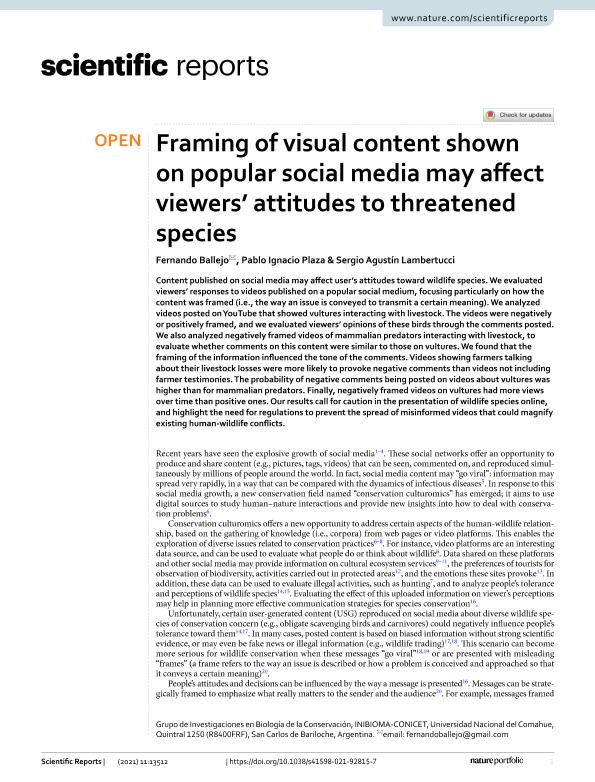Artículo
Framing of visual content shown on popular social media may affect viewers’ attitudes to threatened species
Fecha de publicación:
12/2021
Editorial:
Nature Publishing Group
Revista:
Scientific Reports
e-ISSN:
2045-2322
Idioma:
Inglés
Tipo de recurso:
Artículo publicado
Clasificación temática:
Resumen
Content published on social media may affect user’s attitudes toward wildlife species. We evaluated viewers’ responses to videos published on a popular social medium, focusing particularly on how the content was framed (i.e., the way an issue is conveyed to transmit a certain meaning). We analyzed videos posted on YouTube that showed vultures interacting with livestock. The videos were negatively or positively framed, and we evaluated viewers’ opinions of these birds through the comments posted. We also analyzed negatively framed videos of mammalian predators interacting with livestock, to evaluate whether comments on this content were similar to those on vultures. We found that the framing of the information influenced the tone of the comments. Videos showing farmers talking about their livestock losses were more likely to provoke negative comments than videos not including farmer testimonies. The probability of negative comments being posted on videos about vultures was higher than for mammalian predators. Finally, negatively framed videos on vultures had more views over time than positive ones. Our results call for caution in the presentation of wildlife species online, and highlight the need for regulations to prevent the spread of misinformed videos that could magnify existing human-wildlife conflicts.
Palabras clave:
Social media
,
Conservation
,
Vultures
,
Predators
Archivos asociados
Licencia
Identificadores
Colecciones
Articulos(INIBIOMA)
Articulos de INST. DE INVEST.EN BIODIVERSIDAD Y MEDIOAMBIENTE
Articulos de INST. DE INVEST.EN BIODIVERSIDAD Y MEDIOAMBIENTE
Citación
Ballejo, Fernando; Plaza, Pablo; Lambertucci, Sergio Agustin; Framing of visual content shown on popular social media may affect viewers’ attitudes to threatened species; Nature Publishing Group; Scientific Reports; 11; 1; 12-2021; 1-10
Compartir
Altmétricas




